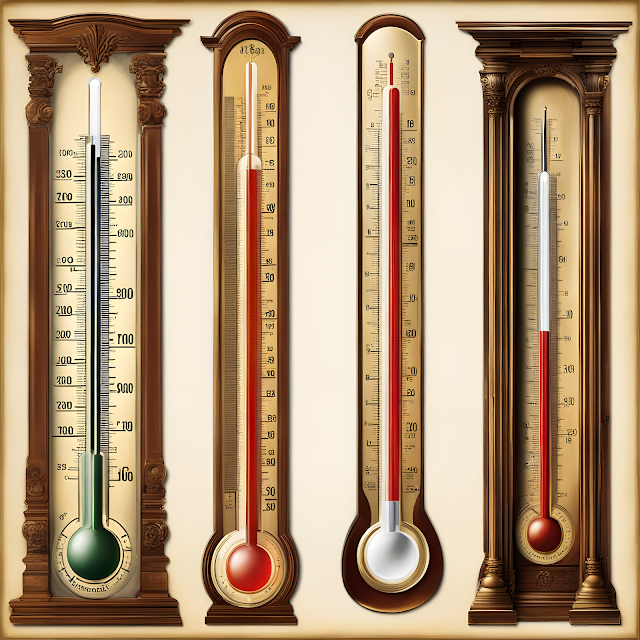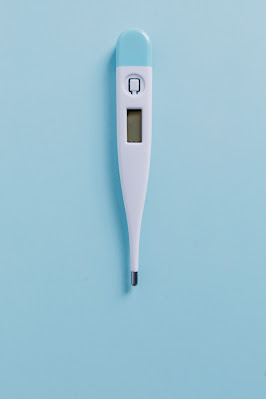Introduction: The invention of thermometer
The invention of thermometer was a monumental step in human history making a turning point in understanding the world around us thermometer is a device that measures the temperature of the system ( Hotness or coldness), It is very important to various applications like Manufacturing, scientific discoveries and Medical practices. The thermometer is a ubiquitous device that we often take for granted in our daily lives. It allows us to measure and monitor temperature, enabling us to make informed decisions about our environment and health. But have you ever wondered about the fascinating story behind its invention? Join us on a journey through time as we explore the remarkable thermometer history and its evolution.
Ancient Origins:
The concept of temperature and its measurement has intrigued humanity for centuries. Early forms of thermometer invented by ancient Greeks and Romans used primitive temperature devices, such as the thermoscope, which relied on the expansion and contraction of air or liquids to indicate temperature changes. However, these early devices lacked a standardized scale and were limited in their accuracy and practicality.
The Mercury Thermometer:
The true breakthrough in temperature measurement came in the 17th century with the invention of the mercury thermometer. In 1714, the mercury thermometer was discovered by the Polish-born physicist Daniel Gabriel Fahrenheit, it was also called the mercury-in-glass thermometer, which quickly gained popularity due to its increased accuracy and reliability. Fahrenheit’s design featured a narrow glass tube filled with mercury and a calibrated scale, allowing precise temperature readings.
The Celsius Scale:
Around the same time, in the mid-18th century, another significant advancement occurred with the creation of the Celsius scale. Swedish astronomer Anders Celsius developed a temperature scale based on the freezing and boiling points of water. His scale, originally reversed from the modern one, was later modified by fellow scientist Carl Linnaeus to the scale we use today, where 0 degrees represents the freezing point of water and 100 degrees represents its boiling point.
Further Innovations:
The 19th century witnessed several innovations in thermometer technology. In 1831, British scientist William Thomson (later known as Lord Kelvin) introduced the Kelvin scale, which is based on absolute zero, the lowest possible temperature. The Kelvin scale is widely used in scientific research and engineering.
During this period, other types of thermometers emerged, such as the bimetallic thermometer, which relies on the different expansion rates of two metals to measure temperature. Additionally, electrical thermometers, such as the thermocouple and resistance thermometer, were developed, enabling temperature measurement in a wider range of environments.
Digital Thermometers:
The latter half of the 20th century saw the advent of digital thermometers. These thermometers, equipped with electronic sensors and digital displays, revolutionized temperature measurement by providing instant readings and greater precision. Digital thermometers have become commonplace in medical settings, home use, and various industries.
Advancements in Non-Contact Thermometry:
In recent years, there have been significant advancements in non-contact thermometry. Infrared thermometers, also known as pyrometers, use infrared radiation to measure temperature without physical contact. These devices have found widespread use in industries such as manufacturing, food safety, and medical diagnostics, enabling fast and hygienic temperature
measurements.
Modern Applications:
Thermometers are now essential tools in a variety of domains. In healthcare, thermometers are used to monitor body temperature and detect fever, aiding in the diagnosis and management of illnesses. Industrial sectors rely on thermometers to ensure optimal operating conditions, prevent equipment failure, and maintain product quality. Weather stations, agricultural practices, and climate research heavily depend on accurate temperature measurements to study and predict environmental changes.
Timeline of Thermometer History-
Ancient Times:
- 5th Century BC: Herodotus, the Greek historian, described an intriguing device used by Egyptians to assess water temperature. It involved lowering a rope with marked knots into water and observing how deep it submerged based on the prevailing temperature. (Reference: Herodotus, “Histories” (Book II, Chapter 109))
- 3rd Century BC: Philo of Byzantium, a renowned polymath, devised a rudimentary thermoscope using air expansion. It consisted of a vessel filled with air connected to a submerged tube. As the temperature increased, the air expanded, pushing the water level in the tube up. (Reference: Philo of Byzantium, “Pneumatics” (Book II, Chapter 25))
- 1st Century AD: Hero of Alexandria, a prolific engineer, constructed a water-based thermoscope featuring a graduated scale. This innovation allowed for a more precise comparison of temperature changes. (Reference: Hero of Alexandria, “Pneumatics” (Book I, Chapter 35))
Exploring Other Avenues of Temperature Measurement
- 6th Century AD: Byzantine Empire: Scientists explored using metal rods that expanded and contracted with temperature changes, suggesting a precursor to bimetallic thermometers.
- 13th Century AD: China: The Song Dynasty saw the development of “fire crows,” small bird-shaped indicators that changed color based on temperature, primarily used in metallurgy.
- 16th Century AD: Italy and Germany: Several inventors, including Giovanni Battista della Porta and Cornelius Drebbel, experimented with various thermoscope designs, paving the way for Galileo’s groundbreaking work.
Galileo Galilei: Galileo Thermometer
While the Galileo thermometer (or Galilean thermometer), invented by Vincenzo Viviani, a student of Galileo Galilei, is a renowned example, it’s important to acknowledge that Galileo himself did not directly invent it. His contributions lay in:
- Paving the way with the thermoscope: Galileo developed a thermoscope using water and air-filled bulbs, showcasing increased sensitivity compared to earlier models. This laid the foundation for the concept of density and temperature changes.
- Inspiring further innovation: Galileo’s curiosity and experimentation fostered an environment where his student, Viviani, could build upon his ideas and create the iconic Galileo thermometer.
The Galileo Thermometer: A Unique Design and Its Significance
The Galileo thermometer stands out with its:
- Sealed glass container: This ensured consistent conditions and prevented external factors from influencing readings.
- Clear liquid: This allowed for better visibility of the colorful floats and their positions.
- Gas-filled floats of varying densities: This enabled a multi-point temperature indication rather than just a single value.
While not as precise as modern thermometers, the Galileo thermometer offered several advantages:
- Decorative and visually appealing: It served as an aesthetic addition to households and scientific laboratories.
- Relatively easy to read: The positions of the floats provided a clear indication of temperature ranges.
- Accessible and affordable: Compared to more complex instruments, it was readily available to a wider audience.

17th Century:
1714: The Rise of Mercury and Fahrenheit’s Precision
- Inventor: Daniel Gabriel Fahrenheit, a German instrument maker and physicist, revolutionized thermometry with his mercury-in-glass thermometer.
- Innovation: Fahrenheit’s brilliance lay in replacing alcohol with mercury, a liquid with exceptional thermal expansion properties, leading to significantly increased accuracy and sensitivity compared to earlier models.
- The Fahrenheit Scale: Building upon his invention, Fahrenheit established his namesake temperature scale, calibrating it using the freezing point of saltwater (0°F), human body temperature (96°F), and the boiling point of water (212°F).
- Historical Significance: Fahrenheit’s thermometer paved the way for widespread scientific and medical applications of temperature measurement. His scale, though not universally adopted, remains prevalent in the United States and parts of the Caribbean.
1742: Celsius and the Freezing and Boiling Points
- Inventor: Anders Celsius, a Swedish astronomer, introduced his temperature scale in 1742, based on the freezing and boiling points of water.
- The Celsius Scale: Initially, Celsius assigned 100° to the freezing point and 0° to the boiling point, later inverting the scale for easier interpretation. This scale, initially called the centigrade scale, eventually gained widespread adoption, becoming known as the Celsius scale today.
- Scientific Impact: Celsius’s scale offered a standardized and easily reproducible system for temperature measurement, facilitating collaboration and comparison across scientific fields.
1749: Christin and the Centigrade Confusion
- Inventor: Jean-Pierre Christin, a French physicist, independently proposed a temperature scale based on the freezing and boiling points of water, initially named the centigrade scale.
- A Case of Misattribution: Interestingly, Christin’s scale was initially identical to Celsius’s inverted version, leading to some confusion and misattribution of the “centigrade” moniker. Despite his independent contribution, Celsius’s scale gained wider recognition and cemented the term “centigrade” in the scientific lexicon.
Thermometer Evolution
- Early Efforts: Before Fahrenheit, craftsmen like René-Antoine Ferchault de Réaumur in France and Ole Rømer in Denmark developed alcohol-based thermometers, paving the way for Fahrenheit’s mercury innovation.
- Standardization Struggles: Establishing a universally accepted temperature scale wasn’t easy. Rivalries and differing national interests delayed widespread adoption of the Celsius scale until the late 19th century.
- The Legacy: The 18th century laid the foundation for modern thermometry, with mercury thermometers dominating for centuries and the Celsius scale becoming a global standard. Today, advancements in technology have led to diverse thermometers, from digital models to infrared sensors, each contributing to our ever-evolving understanding of temperature.
19th Century:
1800: Alessandro Volta and the Rise of the Bimetallic Thermometer:
- Inventor: Alessandro Volta, an Italian physicist known for inventing the battery, turned his keen mind to temperature measurement.
- The Innovation: He created the first practical bimetallic strip thermometer. This utilized two strips of metals with different expansion rates bonded together. As temperature changes, the differing expansions cause the strip to bend, and its deflection can be calibrated to indicate temperature.
- Significance: Volta’s invention offered several advantages: portability, ruggedness, and wider temperature range compared to earlier liquid-based thermometers. It found applications in various fields, from meteorology to medicine.
1821: Thomas Johann Seebeck and the Spark of Thermoelectricity:
- Inventor: Thomas Johann Seebeck, a German physicist, stumbled upon a fascinating phenomenon while studying magnetism and heat.
- The Discovery: He observed that creating a temperature difference between two points of a closed circuit containing different metals produced an electric current. This became known as the thermoelectric effect.
- Significance: Seebeck’s discovery, though seemingly unrelated to temperature measurement at first, laid the groundwork for the development of thermocouples. These devices utilize the thermoelectric effect to directly convert temperature differences into electrical signals, paving the way for highly sensitive and versatile temperature measurement tools.
1831: William Thomson (Lord Kelvin) and the Absolute Scale:
- Inventor: William Thomson, later known as Lord Kelvin, a Scottish physicist and mathematician, took a revolutionary approach to temperature measurement.
- The Innovation: He proposed the Kelvin scale, an absolute temperature scale based on the concept of absolute zero, the point at which all molecular motion ceases. This theoretical temperature, approximately -273.15°C, provided a fixed reference point for temperature measurement, independent of the properties of any specific material.
- Significance: The Kelvin scale, with its absolute nature, proved invaluable in various scientific fields, including thermodynamics, astronomy, and physics. It became a foundation for understanding the fundamental relationship between temperature and energy.
Beyond the Headlines:
- Volta’s bimetallic thermometer wasn’t just practical; it was also visually appealing, often housed in decorative casings, becoming popular conversation pieces in households.
- Seebeck’s initial discovery wasn’t solely focused on temperature measurement; he explored its potential applications in electricity generation, laying the groundwork for thermoelectric power, now used in spacecraft and renewable energy applications.
- Lord Kelvin’s contributions extended far beyond the temperature scale. He played a crucial role in developing the laws of thermodynamics and made significant contributions to various fields, including communication and navigation.
20th Century:
1927: Carl Anderson and the Birth of the Thermistor
- Beyond Invention: While Carl Anderson is credited with inventing the thermistor, the story starts earlier. In 1871, Lord Kelvin predicted the existence of materials whose resistance changes significantly with temperature. This theoretical groundwork paved the way for Anderson’s practical realization.
- Impact: Thermistors, with their small size, fast response time, and wide temperature range, revolutionized various fields. From medical thermometers to spacecraft temperature monitoring, they offered unprecedented accuracy and versatility.
- Beyond the Inventor: Samuel Ruben, another physicist, independently invented a similar device around the same time, highlighting the collaborative nature of scientific progress.
1961: Otto Hahn and Fritz Strassmann – The Precision of RTDs
- From Nobel Laureates to RTDs: Both Hahn and Strassmann were Nobel laureates in Chemistry for their discovery of nuclear fission. However, their scientific curiosity extended beyond nuclear physics. They realized the potential of measuring electrical resistance changes in certain metals to create highly accurate thermometers.
- RTDs: The Industrial Workhorses: Resistance Temperature Detectors (RTDs) are known for their exceptional accuracy, stability, and wide temperature range. They became the go-to choice for industrial process control, power plants, and scientific research demanding high precision.

- Beyond the Inventors: The development of RTDs involved contributions from numerous scientists and engineers worldwide, refining materials, construction techniques, and calibration methods.
1967: IPTS-68 – A Global Agreement on Temperature
- Beyond Standardization: Prior to IPTS-68 (International Practical Temperature Scale), various temperature scales existed, leading to confusion and inconsistencies. This international agreement established a unified and reproducible scale based on multiple reference points and defined physical constants.
- Impact: IPTS-68 ensured global consistency in temperature measurements, crucial for scientific collaboration, industrial production, and international trade. It paved the way for further refinements and the eventual adoption of the International Temperature Scale of 1990 (ITS-90).
- Beyond a Single Event: Establishing IPTS-68 involved years of meticulous work by scientists from various countries, highlighting the importance of international cooperation in scientific endeavors.
1984: The Digital Revolution in Thermometry
- From Analog to Digital: The introduction of commercially available digital thermometers marked a significant shift. Electronic sensors replaced traditional liquid-based or mechanical methods, offering instant readings and improved accuracy.
- Impact: Digital thermometers made temperature measurement more accessible and user-friendly for everyday applications. They also opened doors for further advancements, such as integration with other devices and data transmission capabilities.
- Beyond a Single Year: The development of digital thermometers wasn’t instantaneous. It involved years of research in miniaturization, sensor technology, and display advancements, building upon the work of countless engineers and scientists.
Recent Developments:
Late 20th Century: Infrared Thermometers – Seeing Heat Without Touch
- From Military to Industry: The origins of infrared thermometers, also known as pyrometers, trace back to the early 20th century, primarily used in military applications for target tracking and weaponry.
- Leslie’s Legacy: In 1824, Sir Matthew Leslie invented the first practical infrared thermometer, but it wasn’t until the 1930s and World War II that the technology saw significant advancements.
- Post-War Boom: Following the war, infrared thermometers found widespread application in various industries, including:
- Metalworking: Measuring molten metals without contact.
- Food processing: Ensuring food safety by monitoring temperatures during storage and transport.
- Medical field: Measuring body temperature remotely, especially for infants and vulnerable patients.
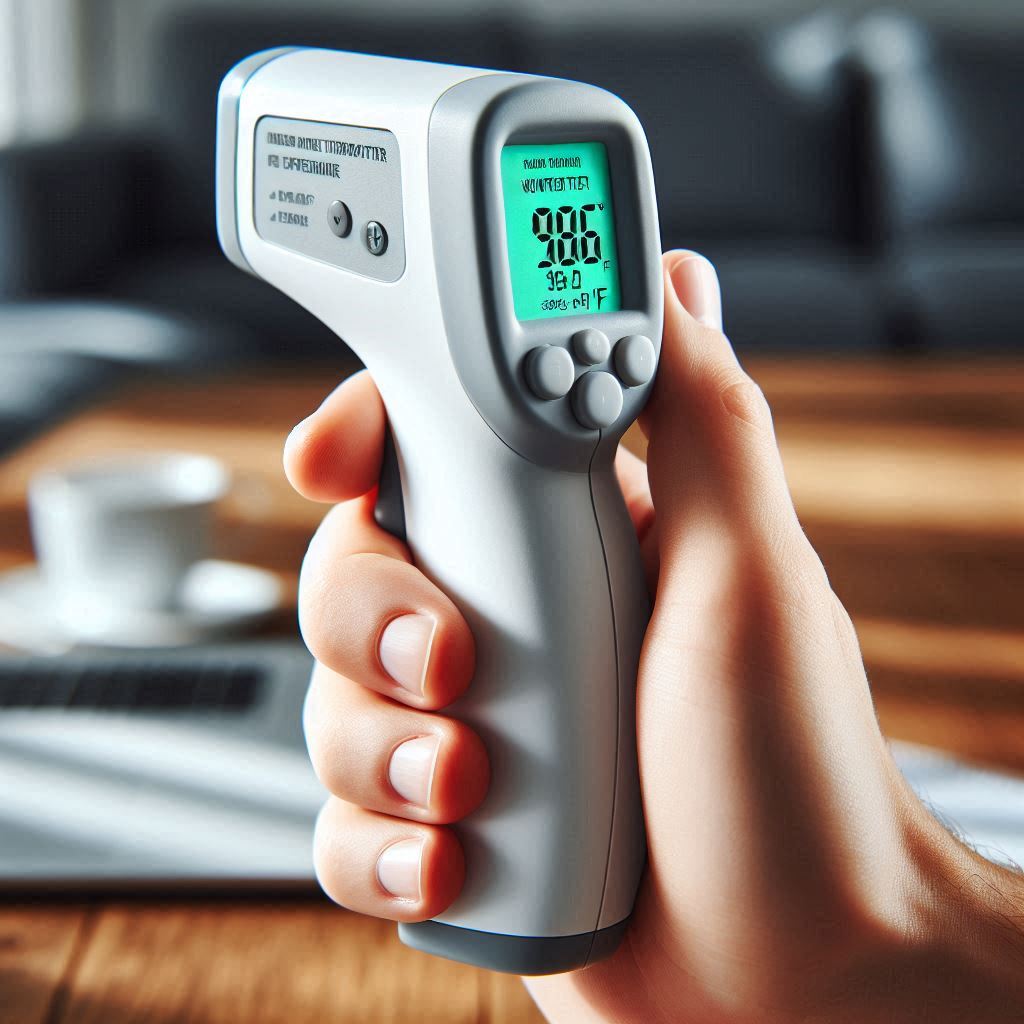
Beyond the Basics: Lesser-Known Facts and Innovations:
- Line Scanners: Capture temperature across a line, ideal for inspecting large surfaces.
- Spot Thermometers: Measure temperature at a single point, more commonly used in everyday settings.
- Accuracy Matters: Early infrared thermometers struggled with accuracy, but advancements in detectors and calibration techniques have significantly improved their reliability.
- Medical Breakthroughs: The use of infrared thermometers for non-invasive temperature measurement revolutionized medical diagnosis, particularly in detecting fevers and monitoring body temperature changes during surgeries.
21st Century: The Age of Smart Thermometers:
- Miniaturization Marvels: Advancements in microelectronics and sensor technology have led to the development of miniature and portable infrared thermometers.
- Wireless Revolution: The integration of Bluetooth and Wi-Fi connectivity allows smart thermometers to transmit data to smartphones and other devices for:
- Real-time monitoring: Track temperature changes continuously.
- Data analysis: Identify trends and patterns for personalized insights.
- Remote access: Monitor temperature remotely for added convenience.
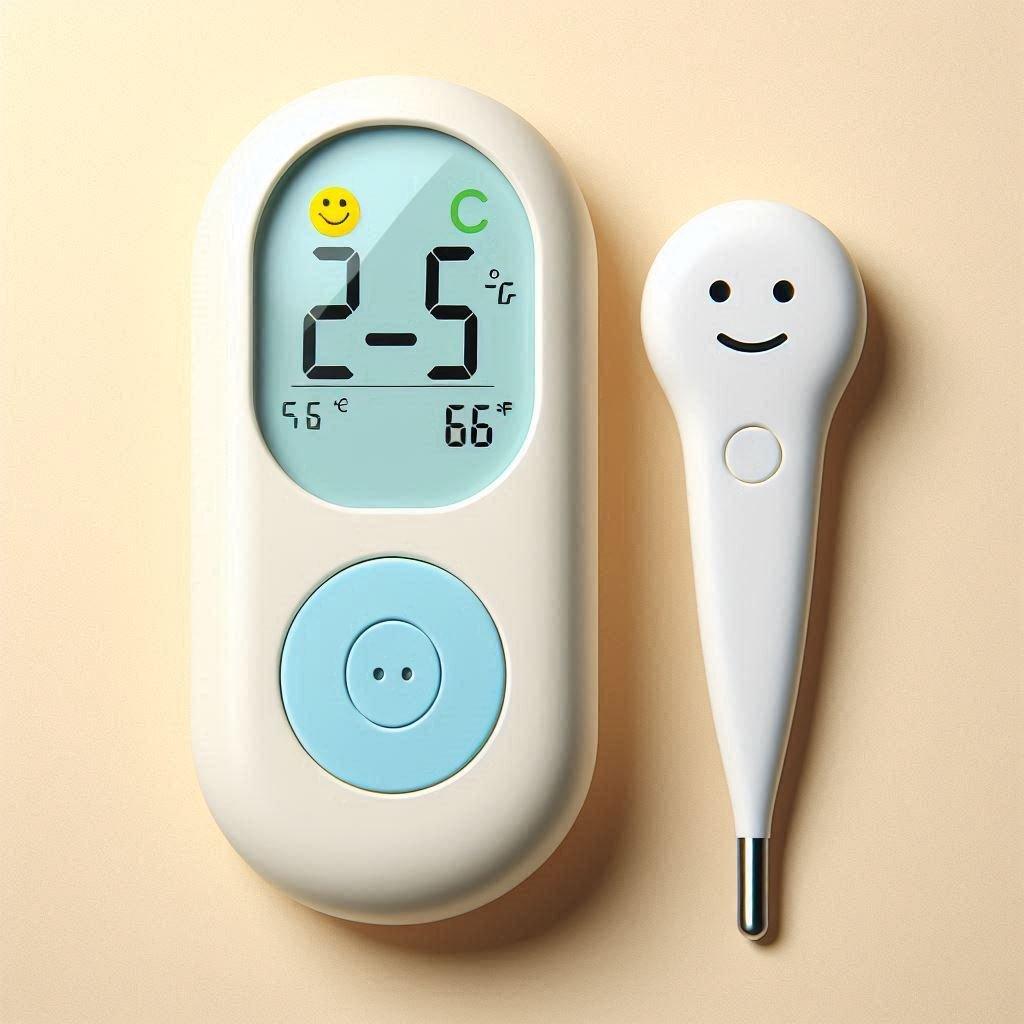
Beyond Convenience: Smart Applications and the Future
- Smart Homes: Integrated into smart home systems, smart thermometers can trigger automated actions based on temperature changes, like adjusting thermostats or activating air conditioners.
- Wearable Technology: Smartwatches and fitness trackers are increasingly incorporating temperature sensors, offering continuous health monitoring.
- Food Safety Revolution: Smart food thermometers can guide users through cooking processes, ensuring optimal temperatures and preventing foodborne illnesses.
Looking Ahead: The Future of Temperature Measurement
The evolution of temperature measurement is far from over. Future possibilities include:
- Non-invasive blood sugar monitoring: Utilizing infrared technology for pain-free blood glucose level measurement.
- Early disease detection: Identifying potential health issues based on subtle temperature changes.
- Advanced materials: Development of new sensors and materials for even higher accuracy and wider range of applications.
Thermodynamic Temperature Scales Fahrenheit Scale:
The Fahrenheit scale was invented by a physicist named Daniel Gabriel Fahrenheit in the early 18th century. Fahrenheit originally used a mixture of water, ice, and salt to establish reference points for his scale. He assigned 0°F to the lowest temperature he could achieve with this mixture, and he defined 100°F as the temperature of a person’s body (specifically, his wife’s underarm temperature). Later, Fahrenheit adjusted his scale by dividing the range between the freezing and boiling points of water into 180 equal divisions.
Celsius Scale:
The Celsius scale, also known as the centigrade scale, was developed by a Swedish astronomer named Anders Celsius in the mid-18th century. Celsius based his scale on the freezing and boiling points of water. He set 0°C as the freezing point and 100°C as the boiling point, dividing the range between these two points into 100 equal divisions. Celsius’s scale quickly gained popularity and is now widely used around the world, especially in scientific and metric contexts.
Kelvin Scale:
The Kelvin scale, named after the Scottish physicistWilliam Thomson, 1st Baron Kelvin, is the fundamental temperature scale in the field of thermodynamics. It was established in the 19th century to provide an absolute temperature scale, where absolute zero (the point at which molecular motion ceases) is assigned as 0 Kelvin (0 K). The Kelvin scale has the same incremental size as the Celsius scale, with the freezing point of water at 273.15 K and the boiling point of water at 373.15 K. It is commonly used in scientific and engineering applications, especially in contexts that involve calculations based on the laws of thermodynamics.

The thermodynamic temperature scale is an extension of the Kelvin scale which is also called the absolute temperature scale. It is based on thermodynamics principles & is used to measure the energy of the system. As it is referenced to absolute zero temperature this scale doesn’t have negative values. It helps to understand and analyze the behavior of matter at different temperatures.
To convert temperatures between Celsius and Fahrenheit, we need to use conversion formulas. For example, to convert from Celsius to Fahrenheit, you can use the formula:
°F = (°C × 9/5) + 32
And to convert from Fahrenheit to Celsius, you can use the formula:
°C = (°F – 32) × 5/9
These temperature scales help us understand and compare temperatures in different regions and situations, such as weather forecasts, cooking, or scientific experiments.
The International Temperature Scale-
The International Temperature Scale of 1990 (ITS-90) is a system used by scientists and engineers to measure temperature accurately and consistently. It provides a set of reference points and methods for measuring temperature.
The “triple point of water,” is an important reference point which is the temperature at which water can exist as a solid, liquid, and gas at the same time. Another reference point is the freezing point of substances like gallium and zinc. These reference points help create a scale that we can use to measure temperature.
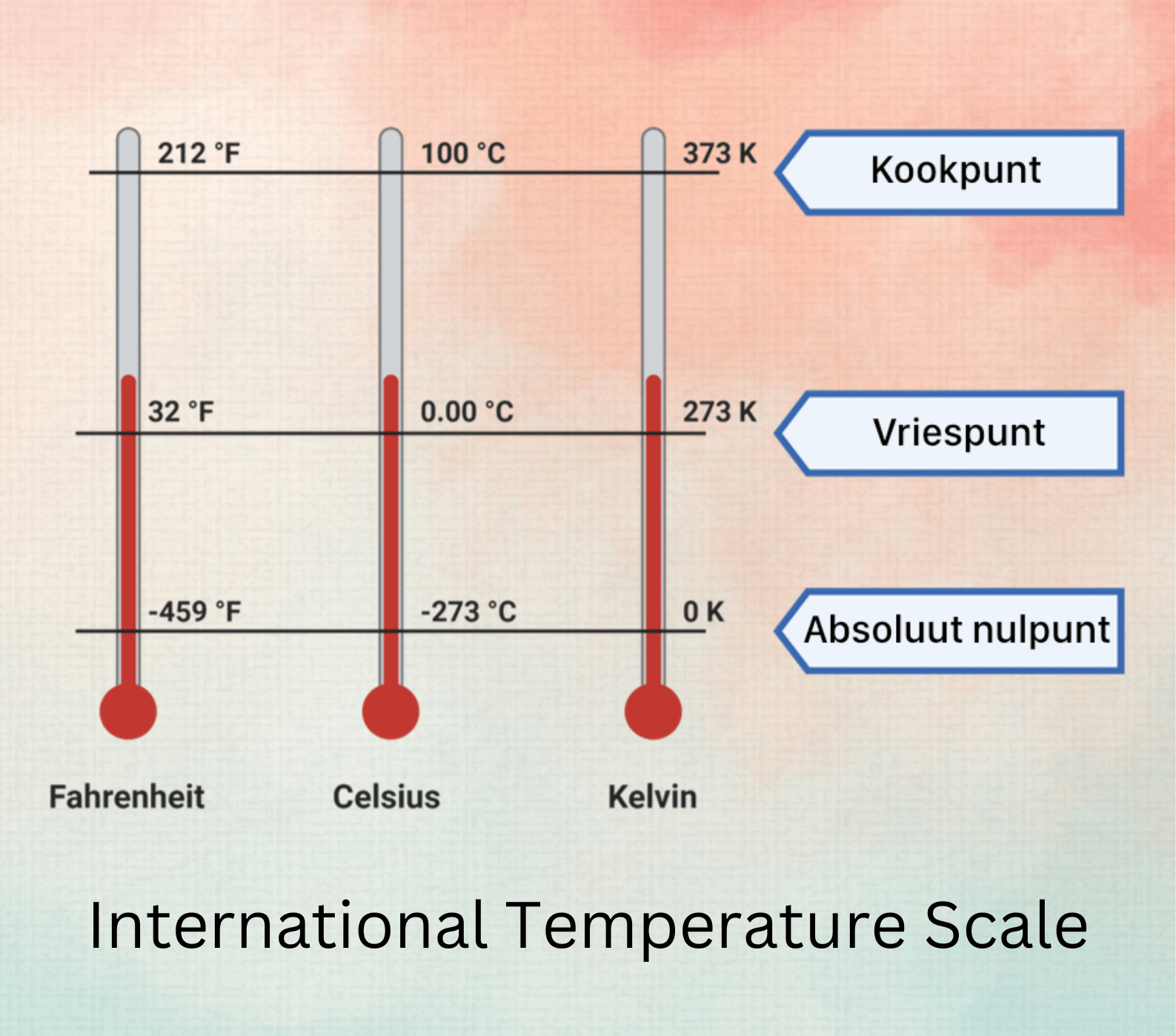
The ITS-90 also provides ways to measure temperatures between these reference points. It gives instructions on how to use different types of thermometers or sensors to get accurate temperature readings.
This range approximately varies from 0.65 K (−272.5 °C; −458.5 °F) to 1,358 K (1,085 °C; 1,985 °F).
The International Temperature Scale (ITS-90) is designed to make sure that temperature measurements are accurate, precise and uniform across different labs and experiments. Due to this scientists and engineers can communicate and compare their temperature data more accurately.
For ordinary use, people usually use the Celsius scale to talk about temperature but ITS-90 is more specific and precise, and it is mainly used in scientific and industrial settings where accurate temperature measurements are important.
Conclusion:
The invention of the thermometer is an important tool that allows us to understand and control our environment. From the discovery of ancient thermoscopes to modern digital and infrared thermometers, has gone through continuous refinement and innovation. With continuous developments in technology, we can only anticipate further developments in temperature measurement and monitoring, empowering us to tackle the challenges of an ever-changing world.
Check out some of my other blog posts:

